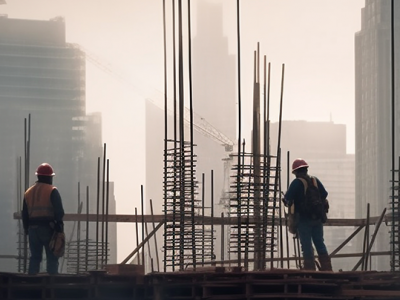It has been more than a year since the covid-19 pandemic started surging worldwide, and one would assume that no factor of the virus should catch us off-guard right now. Unfortunately, while policymakers struggled to tackle various pandemic challenges – PPE shortages, economic collapse, unemployment, labor crisis, vaccines, while some policymakers ignored all of them; lack of oxygen supply was unforeseen. Lately, Brazil and India have been on the front pages due to surging covid 19 cases, especially in India where the daily average is more than 370,000. The rampant admission of covid 19 patients to the hospitals has caused these countries to face an immense lack of oxygen cylinders to an extent wherein the kins of the patient is expected to gather the oxygen supply themselves. Indian hospitals are also witnessing death due to a lack of oxygen supply on a daily basis.
The lack of oxygen cylinders was a highlight of poor facilities and infrastructure as one of the major risks to the hospital industry. According to a NY Times article, certain hospitals have the privilege of owning their plants to extract oxygen from the air, a technology known as pressure swing absorption. But the systems are expensive, and a hospital that buys one would also have to install a system of pipes to deliver the oxygen to bedsides (Pérez-Peña, 2021). Currently, in India, it is the state-owned oil and gas PSUs that are setting up these PSAs to meet the country’s oxygen requirement. The government must also focus on a better and stronger investment at the local level hospitals since these hospitals only have the tools to provide basic medical assistance and are not capable of handling an overwhelming situation like the pandemic.
The second wave also witnessed the sudden impact on health insurance providers with not being able to meet request claims. (Sharma, 2021). Only 57 percent or Rs 9,000 crore has been cleared out of the INR 15,700 crores COVID-19 claims filed with the insurance companies in April 2021. The Insurance Regulatory and Development Authority of India (IRDA) asked all insurance companies to approve all cashless claims against covid 19 hospitalizations within an hour as its denial was delaying patients from even getting admitted. Learning from the current situation, insurance companies must enact an ‘epidemic clause’ which would ensure that a bulk claim would not cause a burden on the company, the hospital, and the patient.
While the roles of medical professionals are commendable during covid-19, they have been exposed to be claims to negligence, malpractices, and ill-treatment of patients. In a genuine scenario, Ceteris Paribus, there could be numerous reasons why a covid-19 patient has died in the hands of the doctors and nurses. To meet with the impact of covid 19, final year medical students retired medical professionals, and the existing ones were retrained and deployed to serve in remote locations to unfamiliar places to treat the patients. The accusations against the medical professionals, genuine or not, it is the duty of the hospital governing board (along with the official governing medical body) to act on each of them and serve justice accordingly by taking necessary healthcare risk management steps. The 2015 survey by the National Sample Survey Office (Rao et al., 2016) indicates that the state of public healthcare services in India has caused people to depend on private healthcare hospitals for medical treatment in more than 70 percent of the illness. And even though that perception has not changed during the pandemic, private hospitals have misused this preference by exuberant prices, manipulation, and neglecting basic logistical practices due to their hospital management structure (ET HealthWorld, 2020). In June 2020, around 18 private medical establishments in Karnataka were issued a legal notice under the Karnataka Private Medical Establishment Act, 2007 for denial of medical treatment on the false pretext of unavailability of beds and ventilators (Mint, 2020).
Even before Covid-19, the hospital sector was under enormous stress due to the inability to mobilize funds, operational mismanagements, etc; the pandemic just made the situation worse. With this, the trend of consolidation of hospitals also accelerated with shark companies taking over relatively smaller hospitals and thus creating a new pecking order and affecting the hospital management structure for many. The vulnerability of small hospitals makes them in debt to the private healthcare giants who take full advantage of the situation. The risk factor here is that what was once a competitive sector will turn into a monopoly industry where the people at the top of the pyramid will absorb the rest. This means the monopolist will be able to provide essential services at their prices, controlling the market. By small hospitals coming with up hospital risk management plans, they can try to come out of this stage.
The covid 19 pandemic gave a clear picture of the importance of quicker development, deployment, and access to vaccines. Now, there is also a global consensus – drug companies must focus and research more about the risk management in healthcare in a way that will keep us prepared for the epidemic and aware of the vaccine risks. However, this comes at a cost called innovation-access tradeoff. In simple terms, what drives innovation in healthcare, as in any other sector, is profit. So when profits are higher, companies automatically have an incentive to invest in technology. But this means increasing the cost of drugs with the intent of higher profit maximization, which inevitably increases barriers to cheap drugs. Of course, all patients would prefer lower drug prices and the efficient way to do that is to charge prices for drugs that equal their marginal cost, thus increasing access. (DiMasia et al., 2003) Unfortunately, this would lower company profits and hinder Research & Development investments meant for future patients to have better access to drugs and therapy (only 1 out of every 12.5 potential drugs reach the patients, the average drug takes 11-14 years to manufacture, and the costs of making a drug reach its potential customer range from $1 to $2.6 billion) (DiMasi et al., 2016).
(Affordable) Healthcare is a universal right and the inability to pay should not prevent people from receiving basic and superior standards of care. (Holpuch, 2020) More Americans are afraid of paying for healthcare if they become seriously ill (40%) than are afraid of getting seriously ill (33%), according to a 2018 poll by the University of Chicago and the West Health Institute. The healthcare industry was always at the downfall; The pandemic risk assessment has made it crystal clear and states the utmost importance of collective action. We now officially live in uncertain times and will never know what comes tomorrow, so they need to executive this action should be an utmost priority. By taking necessary steps under healthcare risk management, one can always be ready to face the coming challenges and survive through them.
References
1. Pérez-Peña, R. (2021, May 11). Why Are There Oxygen Shortages for Covid Patients Around the World? The New York Times.
https://www.nytimes.com/2021/05/04/world/oxygen-shortage-covid.html?searchResultPosition=1
- Sharma, A. (2021, May 6). Rs 6,700 crore pending COVID-19 claims; only 57% settled so far. Business Today.
- Rao, K., Shahrawat, R., & Bhatnagar, A. (2016, September). Composition and distribution of the health workforce in India: estimates based on data from the National Sample Survey. World Health Organization. https://apps.who.int/iris/handle/10665/329660
- ET HealthWorld. (2020, May 31). 57% worried of high-priced COVID-19 treatment in private hospitals: Survey. ETHealthworld.Com.
- Mint. (2020, July 2). Bengaluru: Notice to 18 private hospitals for “denying” admission.
- DiMasia, J. A., Hansen, R. W., & Grabowskic, H. G. (2003, March 1). The price of innovation: new estimates of drug development costs. ScienceDirect.
https://www.sciencedirect.com/science/article/abs/pii/S0167629602001261?via%3Dihub
- DiMasi, J. A., Grabowski, H. G., & Hansen, R. W. (2016, May 1). Innovation in the pharmaceutical industry: New estimates of R&D costs. ScienceDirect.
https://www.sciencedirect.com/science/article/abs/pii/S0167629616000291?via%3Dihub
- Holpuch, A. (2020, April 16). Profit over people cost over care: America’s broken healthcare exposed by a virus. The Guardian.
https://www.theguardian.com/us-news/2020/apr/16/profit-over-people-cost-over-care-americas-broken-healthcare-exposed-by-virus
Blog Published by: Alron Chittedamn, Student Risk Committee Member












